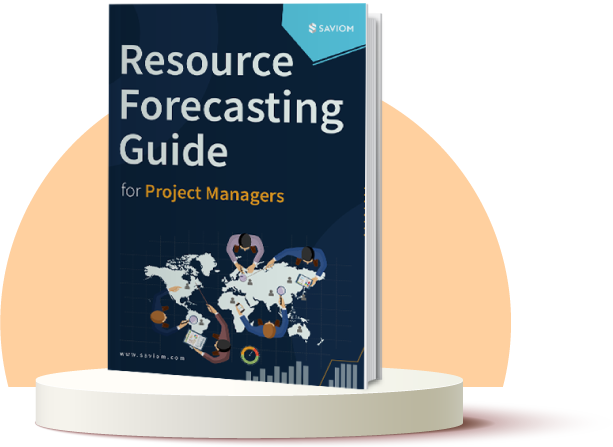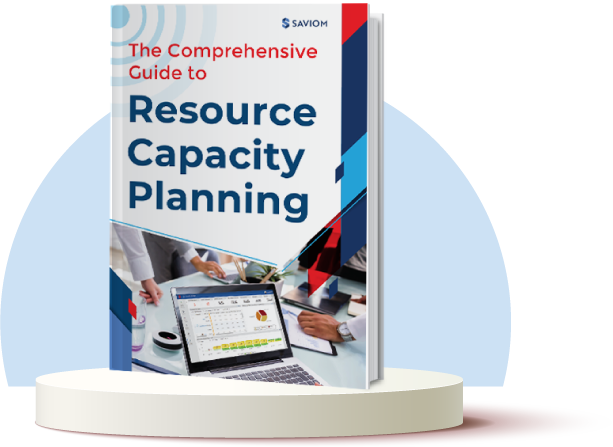Let’s take a scenario where an employee had to go on extended leave due to unavoidable circumstances, and you need to backfill that position immediately with a suitable replacement resource. You also need to hire seasonal employees for the short-term projects in the pipeline. At the same time, your company is also creating a few permanent positions for the future due to the business expansion.
How do you effectively meet all these requirements at once? A practical solution is to formulate an effective talent acquisition strategy.
Since the hiring requirements are different, two separate strategies need to be developed. To begin with, a short-term acquisition strategy is used when organizations need a resource for a shorter duration or quickly fill up a critical role. On the other hand, an employee is hired for a permanent position whose specific skill sets are required continuously in the long-term acquisition.
However, building an effective talent acquisition strategy is not as easy as it sounds and must be carefully planned. It has many facets and elements, regardless of the size and nature of the organization.
This blog discusses the different ways to plan and formulate short-term and long-term talent acquisition strategies. First, let’s look into the basics,
What is talent acquisition, and why is it important?
Talent acquisition is the process of attracting and recruiting top talent, which includes planning, sourcing, assessing, hiring, and onboarding qualified individuals into suitable positions in the organization. It applies to all forms of employee recruitment, including full-time, part-time, and contracts.
Without the right workforce to carry out crucial business functions, no company can expect progress and growth. Their talent and efforts help businesses stay ahead of the competition.
An effective talent acquisition strategy begins with identifying the capacity and skill gaps, followed by planning and sourcing employees ahead of the curve rather than filling vacant positions at the eleventh hour. Hence, it helps prevent last-minute fire-fighting for resources. These strategies also ensure that organizations attract and hire the right resources for their current positions and also have the potential to take on new roles in the future.
In addition, building a talent acquisition strategy helps develop a standardized process to streamline the hiring across the organization. Furthermore, a definite onboarding plan ascertains a seamless employee experience right from the beginning. After learning the significance, let’s understand the need for different acquisition processes for short-term and long-term hiring.
Read More: How to Create an Effective Hiring Strategy
Why do we need different strategies for short-term and long-term acquisition?
The right mix of contingent and permanent resources is essential to keep the costs in check and minimize frequent hiring/firing of the workforce.
Short-term employment is a time-bound position that may last for a few weeks to a few months. These skilled employees are outsourced when there is a niche skill requirement for a one-time project or require extra assistance for a brief duration. Since they work independently or through vendors, they are not part of the direct payroll within the organization. Instead, they get their remuneration either using vendor channels or individual contracts. In addition, since their contract is time-based and they are hired to meet immediate requirements, the onboarding and training duration is short.
On the other hand, long-term acquisition is an ongoing process where employees are hired regularly, sometimes in large numbers. Since the organization wants to retain these employees and achieve meaningful goals, they often provide extensive onboarding and training. They are also provided with employee benefits like paid leave, insurance, retirement plan, etc.
In short, the primary purpose of hiring temporary and full-time employees varies substantially. A single talent acquisition strategy for both forms of acquisition can result in wrongful hiring, frequent hiring/firing, loss of time and money, etc. Therefore, it is necessary to build different strategies for both. The following sections outline the critical steps you should take to build successful long and short-term talent acquisition strategies.
Strategies for short-term talent acquisition
As mentioned above, a short-term talent acquisition strategy is necessary for the smooth recruitment of temporary or seasonal employees.
Here are some strategies for short-term talent acquisition
Assess the skills demands & time period for hiring
While formulating an acquisition strategy, managers need to analyze the capacity v/s demand gap, identify the skill requirements, understand if they are one-time or recurrent, and later define them to the HR department. They can then take a call whether to hire permanent, temporary, or contractual employees and allow recruiters to find the best-fit employee for the open position.
Since short-term hiring usually happens for an immediate replacement for a former employee or due to sudden demand to meet project requirements, the hiring process should be fast. Therefore, setting a time limit can expedite the hiring process without causing any project delays.
Empanel selected vendors for short-term recruitment needs
One of the significant ways to hire temporary employees within a limited time is by collaborating with vendors. However, not every contingent staff vendor will meet your requirements, and finding and negotiating every time with new vendors can also be time-consuming. Therefore, to avoid this, companies can assess the contract format, service charges, and success rate of different contingent staffing agencies and shortlist them in advance.
You can partner with four or five best-fit empaneled vendors. That way, when there is a new project demand, managers can contact these staffing agencies and fulfill short-term recruitment needs. In addition, the organization is relieved of the entire recruitment process as they collaborate with a third party. The vendors are responsible for sourcing, screening, and shortlisting suitable candidates, leaving only the final selection to the organization.
Read More: What is a Contingent Workforce and Why an Organization Needs It
Develop a clear job description that emphasizes role details
A job description is an essential aspect of hiring, which helps a candidate determine whether they are suitable for the position. Therefore, employers need to ensure that job descriptions are accurate, complete, and up-to-date.
It enlists the job title, skill requirements, responsibilities, experience, and even remuneration. The job description helps candidates know whether the position aligns with their qualifications and clarifies any confusion about the role. Thus, the organization will receive only quality applications, which will reduce the assessment time.
Leverage suitable technology for immediate recruitment
Time is one of the most significant constraints during immediate recruitment. The initial process of preparing job descriptions, publishing job posts, screening resumes is time-consuming. Also, finding the best-fit candidates through assessments and interviews needs time and effort. Leveraging technology is one of the suitable ways to tackle these time constraints.
Various apps and technologies like vendor and freelancer management systems help organizations find necessary vendors, contingency workforce, and freelancers on one platform. In addition, implementing a hiring platform enables them to automate the filtering process, centralize their core processes and save time on the initial hiring.
Check quality of hire, cost & employment terms before final selection
Stringent scrutiny is imperative to ensure that the right employee is hired on the right terms, or else it may lead to project delays and budget overruns. Employers should request previous work samples or conduct a pre-employment assessment to examine their skills and then shortlist accordingly.
HR managers must also communicate the salary and other benefits to align with their expectations. Most importantly, while hiring a contractual or temporary employee, discuss the cost and employment term in advance to prevent future conflicts.
Now that the strategies for short-term talent acquisition are clear, let us create a long-term one.
Strategies for long-term talent acquisition
The strategy for long-term acquisition is different because the permanent employees stay in the organization for a long time and play a crucial role in achieving strategic goals. Therefore, managers need to strategize accordingly.
Below are some ways to create a long-term acquisition strategy.
Create a long-term hiring plan and recruitment calendar
Long-term recruitment is an ongoing process that requires extra planning and preparation. However, before making a plan, resource managers need to analyze and estimate the resources required by the respective functional departments. They should also give an estimated lead time to the HR team to ensure timely hiring.
Based on this data, a recruitment calendar can be created, which will contain the positions needed to be hired per quarter and the total headcount for each department. In addition, the hiring timeline will determine when each round of recruitment will begin, ensuring a streamlined process. Moreover, a precise duration for lateral hires will lead to the timely delivery of projects.
Read More: What is Workforce Planning, and How to Master it for Business Efficiency?
Focus on better employer branding to gain a competitive edge
72% of recruiting leaders worldwide agree that employer brands significantly impact hiring.
Employer branding plays a significant role in the outcome of a talent acquisition strategy as it influences an organization’s reputation amongst candidates. Therefore, building a unique and authentic brand is necessary to attract top talent.
Organizations can survey their existing employees and draw conclusions from their suggestions outshine on job portals and social media. They can describe their work culture and post employee testimonials on their social media platforms. When candidates see a positive work environment, they will gravitate towards the organization.
Establish a separate selection process for freshers v/s lateral hires
Similar to how different strategies are required for short-term and long-term employees, a separate selection process is necessary to hire freshers and experienced candidates. An experienced candidate will have better industry insights through their long tenure at previous companies. In contrast, freshers will have an untapped talent that will be crucial for your organization.
Therefore, it is essential to create different assessment processes for candidates. For example, for freshers, the assessment and interview could be based on analyzing their basic knowledge of their job requirements and the necessary skillset. For experienced candidates, employers can look into their past work and request samples of the same.
Use online job portals for a scalable recruitment process
Employers can use online job portals to post job vacancies and efficiently start their recruitment process. These portals will create a social presence, which will help in widening their horizons and attracting talented global resources.
In addition, employers can talk to potential candidates on social media in real-time, resulting in faster responses and easier communication. It will help you secure excellent work relationships and ultimately hire the right candidate sooner.
Encourage employee referrals to get potential job applicants
Organizations can ask their existing employees to recommend prospective employees from their networks. Since they are already familiar with the organization’s culture, mission, and vision, they can easily recommend candidates who make the best fit for your company.
It also helps to reduce time spent on shortlisting resumes and hiring costs. According to SHRM, the average length of the hiring process is 36 days. But it can also be reduced if applicants are employed through referrals. It will also benefit the candidate to quickly adapt to the work culture since they already know at least one person in the company. This also strengthens the employer-employee relationship and fosters trust between them. Since employees are given referral bonuses, it is also beneficial for them.
Conclusion
It is now clear that effective short-term and long-term talent acquisition strategies help an organization recruit top talent. By implementing the techniques mentioned in this article, you can proactively scout the best talent and secure your future goals, thus, creating an optimized workforce.










